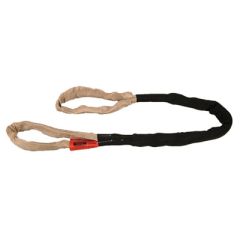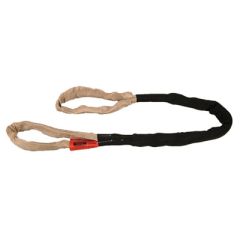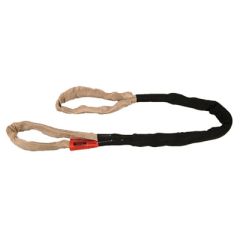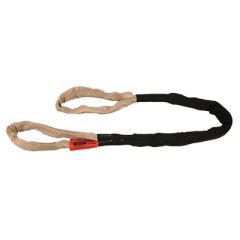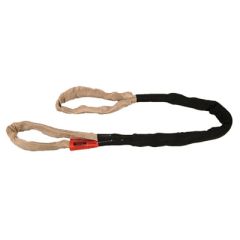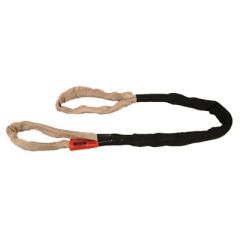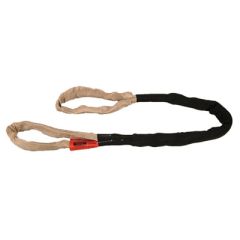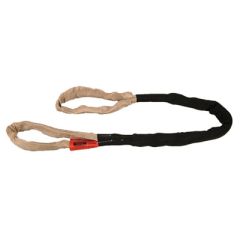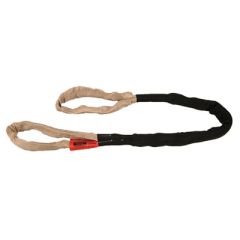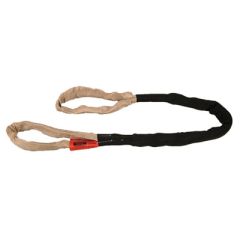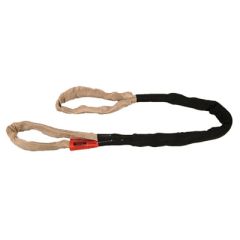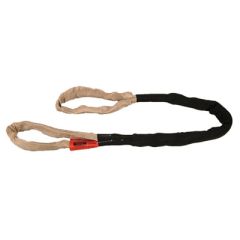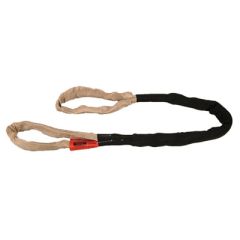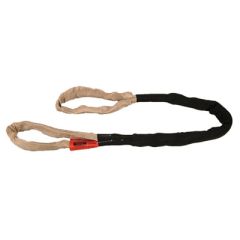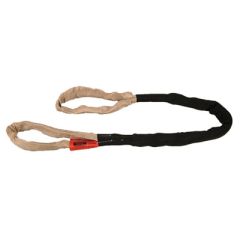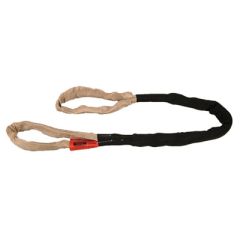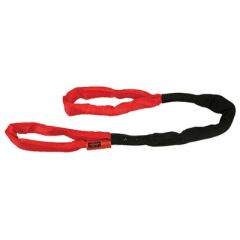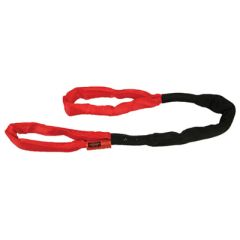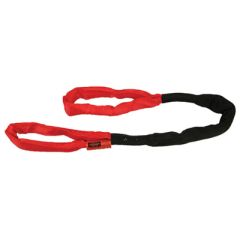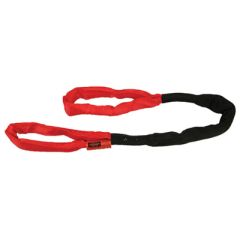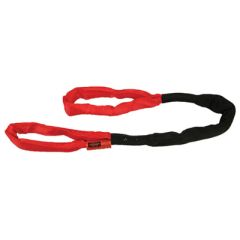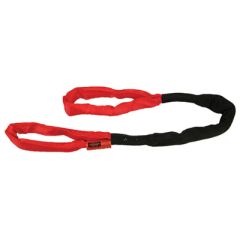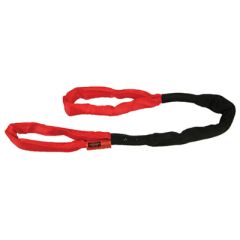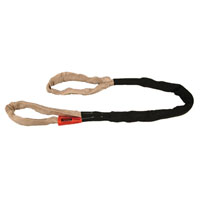
Eye and Eye Roundslings
Roundslings, also written as Round Slings, are an endless loop of yarns covered by a woven tubular jacket. The jacket offers additional durability and flexibility when performing your lift. Eye and eye roundslings are basically the same as endless roundslings. The process to make the eye sling is simply to pinch the body of the sling together and sew a 2nd jacket around the body to make the loops on each end. This process does not affect the rated capacity of the eye and eye roundslings when compared to their endless counterparts. They can be used for choker, vertical, and basket hitches.
Cuts, Holes, and Tears in Synthetic Slings
Cutting is the most common cause for a sling being taken out of service. All synthetic slings are subject to cutting when lifting items with edges. Edges that come in contact with the sling should be padded with material of sufficient strength to prevent damage to the sling. We recommend using wear pads that give extra protection to the sling where the most wear occurs. Anytime a sling is cut in any way, shape or form it should be removed from service. Holes and tears should be treated the same as cuts. Always use appropriate padding and wear protectors, avoid dragging slings across floors, and avoid pulling slings from under loads.
Ultraviolet Light
Environments where synthetic slings are continuously exposed to ultraviolet light can affect the strength of synthetic slings. Slings left in these conditions could see excess wear and may even totally degrade. Various procedures can be used to minimize the effects of ultraviolet light and sun light:
- Store slings in a cool, dry, and dark place when not being used for long periods of time.
- Inspect slings weekly or even more frequently depending on how often slings are used.
Visual indications of ultraviolet degradation are:
- Sling color is faded or "bleached out".
- Increased stiffness of sling material.
- There are surface abrasions in areas not normally in contact with the load.
Slings used in environments where they are subject to continuous exposure to ultraviolet light should be proof tested to two times rated capacity annually, or more frequently depending on severity of exposure.
Improper Sling Loading
Overloading, imbalanced loading, shock loading, and failure to consider hitch, angle and tension effect on rated capacity reduction can reduce the integrity of the sling. Always adhere to rated capacities, and always take into consideration hitch, angle and tension in calculating working load limit. Always build and rig loads so that they are properly balanced and always avoid shock-loading.
Dirt, Grease, and More
Keep dirt, grease, grit, metal chips, and other substances off the sling. Any foreign substance can promote internal abrasion that can reduce sling strength and possibly shorten sling life. Keep slings clean and free of foreign materials to maintain the integrity of the sling.
Temperature
Most web slings and roundslings are not specified for use in temperatures exceeding 194 degrees Fahrenheit or below negative 40 degrees Fahrenheit. For information on lifting solutions in these environments give us a call.
Chemical Exposure
For most lifting applications, the sling material won't make a difference in the quality, capacity, or strength of the roundsling. However, chemically active environments can affect the strength of slings in varying degrees based on the martial of the sling, ranging from little excess wear to total failure. Before ordering slings that are to be used in a chemically active environment, give us a call. In general, Nylon is resistant to many alkalis, and Polyester is resistant to many acids. Again, please call to make sure the sling you are purchasing will be appropriate for your environment.
Care and Storage
Slings should be stored in a clean, dry environment. Slings should be hung from a rack. Be sure to store them in a dark area to prevent exposure to ultraviolent light.































